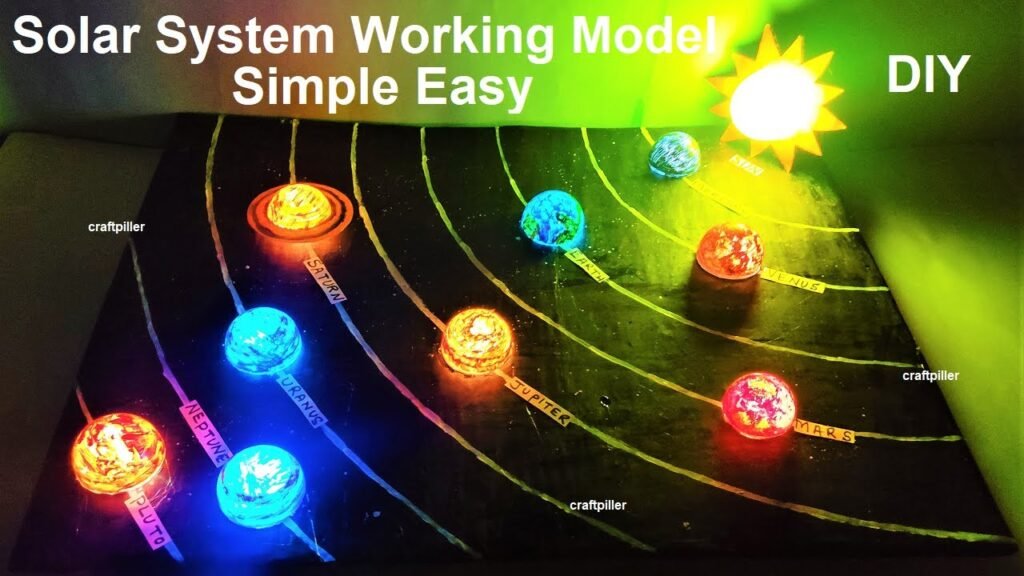The solar system is like a giant family portrait of our cosmic neighborhood. It’s made up of our Sun, the star at the center, and all the celestial objects that orbit around it.
Picture it as a bustling space community where each member has its own role.

First, there’s the Sun, a colossal ball of scorching hot gases that provides us with light and warmth. It’s so massive that it keeps everything else in the solar system in check, including the planets.
Speaking of planets, we have eight of them in our solar system. These are like the main actors in our cosmic show. Mercury, closest to the Sun, is like the speedster, whizzing around in a flash. Venus is a bit of a drama queen, with a thick layer of clouds that hide its surface. Earth, our home, is the perfect stage for life as we know it, thanks to its just-right conditions.
Then comes Mars, the ‘red planet’, which has fascinated scientists for centuries with its potential for life. Jupiter is the big boss of the neighborhood, a giant with a stormy personality. Saturn is famous for its dazzling rings, like a celestial jewelry store. Uranus and Neptune are the mysterious ones, with unique spins and atmospheres.
But the family doesn’t end there. We have moons, which are like the planets’ own little sidekicks. Some, like Earth’s Moon, are big and well-known. Others, like the moons of Jupiter and Saturn, are a bit more exotic.
And let’s not forget the asteroids and comets – like space travelers dropping by for a visit. They zoom around the Sun, sometimes making unexpected appearances.
In a nutshell, our solar system is a bustling cosmic neighborhood, filled with planets, moons, asteroids, comets, and our trusty Sun. Each member has its own role to play in this grand celestial ballet, making our little corner of the universe quite the happening place!
solar system working model with lights – innovative ideas for science project exhibition – simple and easy – diy
In this project, we’ll build a dynamic solar system model using square cardboard, LED lights, and colored LED bulb covers to represent the planets. Here are the steps:
Materials Needed:
- Square cardboard sheet (for the base)
- Black paint or black paper (for space background)
- Different colors of LED bulb covers (for the planets)
- Small LED lights (for planet glow)
- A bigger LED light (for the Sun)
- Cardstock or card paper (for the Sun)
- Wires and connectors (for the electrical connections)
- Glue or adhesive
- Scissors
- Paints or markers (for additional details)
- Pencil (for marking orbits)
Building the Solar System Model:
1. Creating the Base:
Step 1: Use the square cardboard sheet as the base for your solar system model.
Step 2: Paint the cardboard sheet black to create the space background. Alternatively, you can use black paper and glue it onto the cardboard.
2. Marking the Orbits:
Step 3: Using a pencil, mark concentric circles on the black background to represent the orbits of the planets. These circles will guide the placement of the planets.
3. Making the Sun:
Step 4: Cut out a circle from cardstock or card paper to represent the Sun. Decorate it with yellow and orange colors to give it a vibrant look.
Step 5: Attach the bigger LED light to the center of the Sun cutout to represent the Sun’s glow. Ensure it’s securely fixed.
4. Creating the Planets:
Step 6: Use different colors of LED bulb covers to represent the planets. Choose colors that closely match the actual appearance of the planets.
Step 7: Attach small LED lights inside each planet cover to make them glow. Ensure they’re securely fixed.
5. Placing the Planets:
Step 8: Position the LED-covered planets along the marked orbits on the cardboard. Attach them securely in their respective positions.
6. Connecting the LEDs:
Step 9: Connect the LED lights to a power source using wires and connectors. Ensure each LED is properly connected and has power.
7. Optional Details:
Step 10: Add any additional details using paints or markers, such as rings for Saturn or red spots for Jupiter.
Your dynamic solar system model with LED lights is now complete!
This project provides a visual representation of the planets orbiting around the Sun. It’s an engaging educational tool for learning about our solar system with an added element of interactivity.
#solarsystem #workingmodel #lights #innovative #ideas

